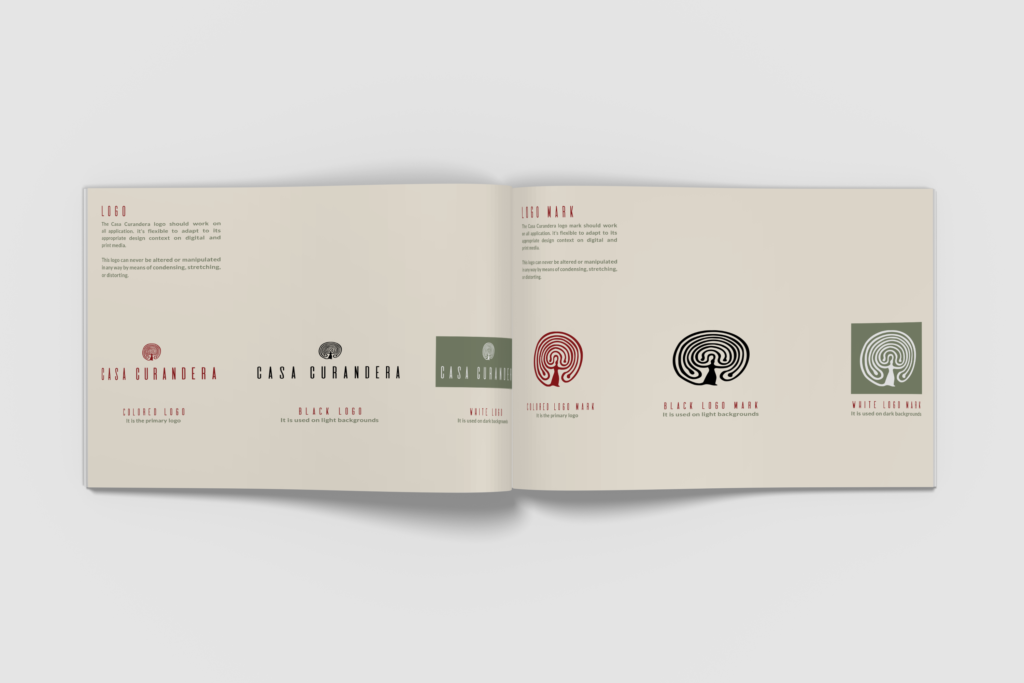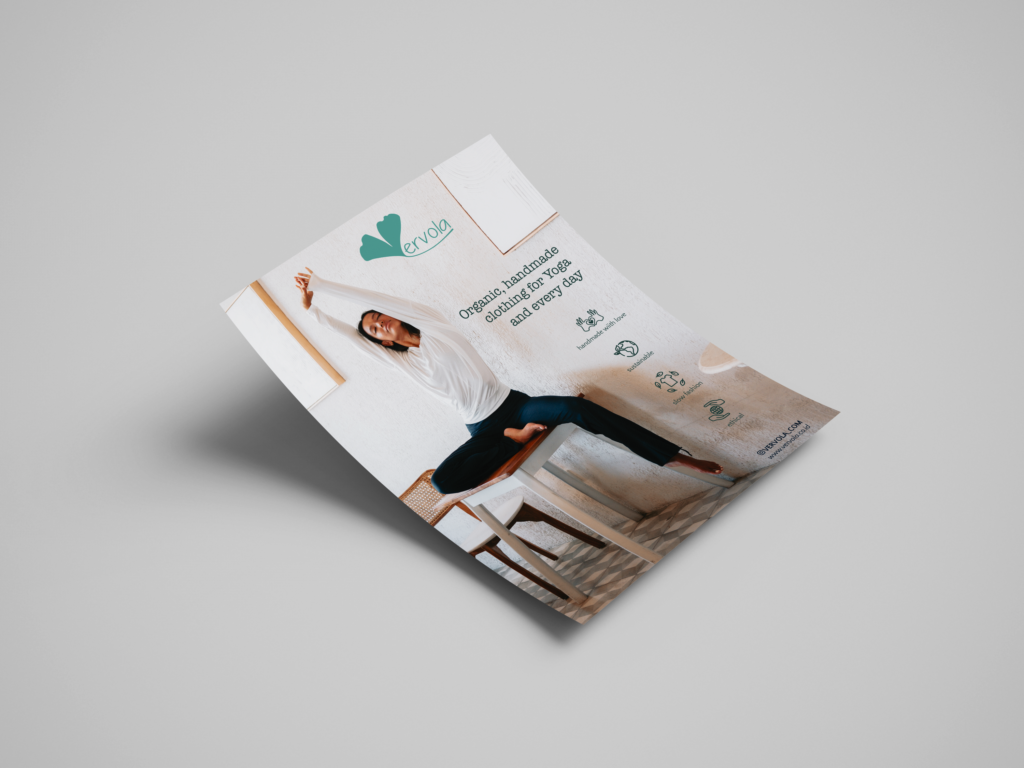Importance de l'identité de la marque
L'identité de la marque est en quelque sorte le cœur et l'âme du plan marketing d'une entreprise. D'après le MarqUne marque, c'est un ensemble d'éléments, comme les logos, la typographie, les couleurs, l'emballage et les messages. Tous ces éléments s'unissent pour créer un sens visuel et verbal de l'identité d'une marque.
Une identité forte et cohérente renforce la confiance et la crédibilité des personnes susceptibles d'acheter vos produits. Cette confiance donne aux gens une impression de chaleur à propos de ce que votre marque offre. De plus, une identité bien pensée aide votre public à se sentir plus proche de votre marque. Si vous souhaitez en savoir plus sur la création d'une identité de marque impressionnante, consultez notre rubrique page de conception de l'identité de la marque.
Impact des études de marché
L'étude de marché est une véritable arme secrète pour les entreprises qui tentent de définir ou de peaufiner l'identité de leur marque. Marq affirme qu'il s'agit de la méthode de référence pour comprendre les particularités culturelles, identifier les groupes de clients clés et orienter l'objectif et la position d'une marque sur le marché.
Voici pourquoi les études de marché sont importantes :
- Tension culturelle: Repérer les tendances et les tensions culturelles permet à une marque de mieux s'adapter à son public.
- Personnages de clients: L'élaboration de profils de clients détaillés permet de modeler les éléments de l'image de marque pour qu'ils correspondent aux désirs et aux goûts de la population cible.
- Objectif et positionnement de la marque: La recherche permet de déterminer ce que représente une marque et comment elle doit être placée sur le marché.
Voici un aperçu des principales conclusions des études de marché qui peuvent avoir un impact sur l'identité de la marque :
| Élément de recherche | Connaissance acquise |
|---|---|
| Tension culturelle | Mettre l'accent sur les thèmes culturels et adapter l'image de marque |
| Personnages de clients | Comprendre les besoins spécifiques, les goûts et les actions |
| Positionnement de la marque | Clarifier les arguments de vente et la signification de la marque |
En s'inspirant des études de marché dans le cadre de leur stratégie de marque, les entreprises peuvent créer des produits plus attrayants et plus expressifs. communication de la marque plans.
Bien sûr, pimentons cet article tout en le gardant terre-à-terre et digeste pour tout le monde. Prenez une tasse de café et c'est parti !
La typographie dans l'image de marque
La typographie est comme la sauce secrète du style visuel d'une marque et de son discours. Si vous maîtrisez la typographie, vous aurez une marque qui restera dans les esprits.

Rôle de la typographie
La typographie n'est pas qu'un simple mot de fantaisie : elle joue un rôle important dans la création de votre marque. C'est ce qui fait que les gens remarquent votre logo, se souviennent de votre slogan, et même choisissent votre livre sur l'étagère (Académie Flux). Voyons pourquoi les polices sont vos meilleures amies.
Lisibilité et facilité de lecture: Vous ne voulez pas que les gens plissent les yeux. Les polices de caractères adéquates facilitent la lecture et permettent à votre public de recevoir le message sans difficulté.
Création d'une hiérarchie: Considérez la typographie comme le pantalon autoritaire de votre design. Elle vous indique ce qu'il faut lire en premier, en second, et ainsi de suite. Les grandes polices en gras crient "Regardez-moi !", tandis que les plus petites chuchotent de doux détails (Académie Flux).
Reconnaissance de la marque: Une police de caractères élégante est comme la signature d'une marque. Si vous vous en tenez à une seule, les gens vous reconnaîtront à des kilomètres à la ronde. Vos polices de caractères peuvent être aussi ludiques, chics ou punk que vous le souhaitez, et correspondre parfaitement à votre image.
Importance du choix des polices de caractères
Choisir des polices de caractères ? C'est comme choisir une tenue vestimentaire pour le premier jour d'école : il faut que vous vous sentiez bien et que vous fassiez une impression parfaite. Les polices de caractères ont elles aussi des sentiments, et ils sont profonds.
| Cas d'utilisation | Police de caractères recommandée | Vibe Check |
|---|---|---|
| A la une | Serif, Bold Sans-Serif | Bossy et courageux |
| Corps de texte | Sans-Serif, Light Serif | Voile tranquille, frais |
| Logo | Personnalisé, Type d'affichage | Unique en son genre, reste à l'esprit |
| Sous-titres | Italique, poids moyen | Contraste sympa, se fait remarquer |
Tableau : Les polices de caractères qui font le travail.
Lorsque vous choisissez des polices de caractères, tenez compte de ces éléments :
Police de caractères et famille de polices: Imaginez que les polices de caractères soient des éléments de construction. Les polices sont vos outils, et les familles de polices sont comme des groupes - tous liés, se côtoyant (Parisleaf).
Personnalité et ton: Votre police de caractères doit être en accord avec votre activité. Une marque amusante et excentrique ? Optez pour des polices loufoques. Vous voulez montrer que vous êtes un homme d'affaires ? Les empattements classiques sont peut-être ce qu'il vous faut.
Cohérence entre les plates-formes: Ne soyez pas la marque qui est partout. Restez fidèle aux polices de caractères que vous avez choisies, que ce soit sur le Web, dans les documents imprimés ou dans les médias sociaux. Ainsi, les gens se diront instantanément "Whoa, c'est vous !" lorsqu'ils verront vos produits.
Si vous souhaitez en savoir plus sur la manière de vous démarquer avec votre marque, découvrez le scoop suivant une communication de marque efficace. Il s'agit d'une mine de conseils pour faire briller votre commerce local à Bali.
Psychologie des couleurs dans l'image de marque
Importance du choix des couleurs
Obtenir les bonnes couleurs éléments de conception de la marque c'est comme trouver l'épice parfaite pour la recette secrète de votre grand-mère. Il s'agit de susciter des sentiments et d'orienter les gens dans certaines directions. Les différentes teintes ont des effets particuliers, comme la baguette magique des émotions.
La connaissance de ce charabia peut amener les gens à réagir comme vous le souhaitez. Selon des experts comme Université RasmussenLes couleurs sont votre sauce secrète pour tirer les ficelles de l'émotion. Baby K'tan LLC, par exemple, n'a pas choisi des couleurs vives au hasard ; elle l'a fait pour répandre des sentiments de confort et de confiance, faisant basculer son bleu vers quelque chose de plus jazzé et joyeux.

Les couleurs influencent la façon dont les gens agissent et ce qu'ils pensent.
Le rouge, par exemple, a tendance à perturber l'attention et les émotions des gens dans certains cas.
Une étude publiée dans le Journal of Experimental Psychology a montré que les participants marqués d'un chiffre rouge ont subi un choc de 20% par rapport à leurs homologues marqués d'un chiffre vert ou noir (Toptal).
| Couleur | Vibe It Gives | Où vous le voyez |
|---|---|---|
| Rouge | Passion, urgence | Panneaux de vente |
| Bleu | Confiance, calme | Annonces de santé |
| Vert | Santé, Paix | Produits de la nature |
| Jaune | Joie, Buzz | Produits pour enfants |
| Noir | Luxe, élégance | Vêtements fantaisie |
Les couleurs jouent avec la culture
Les couleurs ne sont pas seulement des pigments, ce sont aussi des caméléons culturels. La façon dont les couleurs suscitent des émotions varie considérablement d'un pays à l'autre. Si vous envoyez votre marque dans le vaste monde, vous devez bien comprendre ces particularités culturelles. Le rouge peut être synonyme de danger ou d'amour en Occident, mais il danse comme un porte-bonheur en Orient.
| Couleur | Vues de l'Ouest | Vues de l'Est |
|---|---|---|
| Rouge | Danger, Passion | Chance, joie |
| Blanc | Pureté, calme | Deuil |
| Noir | Deuil, Chic | Statut d'élite |
| Jaune | Attention, énergie | Le pouvoir royal |
La prise en compte de ces vibrations culturelles peut aider vos couleurs à faire mouche auprès de votre public. C'est comme si vous faisiez un gros câlin à votre marque et que vous vous assuriez que votre message est vrai et qu'il fait mouche auprès des gens à qui vous vous adressez.
En résumé, jouer la carte de la couleur dans votre stratégie de marque peut modifier les sentiments, changer les perceptions et renforcer le dynamisme de votre marque. Vous voulez en savoir plus sur la façon dont les couleurs influencent la tête et les actions des gens ? Vous pouvez consulter notre section sur la psychologie de la couleur dans le design pour obtenir tous les détails croustillants.
L'imagerie dans l'image de marque
L'imagerie est comme le visage de conception de l'identité de la marque. Les images, les dessins et les graphiques sont des outils pratiques pour façonner la façon dont les gens perçoivent une marque. Nous allons discuter de la place des images dans la stratégie de marque et de la manière dont elles peuvent être associées au texte pour raconter l'histoire d'une marque.

Rôle des images dans la stratégie de marque
Les images attirent l'attention plus rapidement que les abeilles sur le miel. Elles créent un moment d'émotion et touchent la corde sensible lorsqu'elles sont bien faites. Les Groupe Nielsen Norman Le choix des photos peut faire ou défaire la première impression. Elles ajoutent à l'apparence, créent des liens émotionnels et peuvent laisser une empreinte positive sur les utilisateurs.
Les images de marque sont utilisées à plusieurs fins :
- L'attrait esthétique: Des images de qualité supérieure donnent à la marque une allure élégante et attirent l'attention de tous les visiteurs.
- Connexion émotionnelle: Ils peuvent susciter des émotions et donner à la marque l'impression d'être un vieil ami.
- Fourniture d'informations: Les images telles que les photos de produits ou les infographies racontent des histoires plus rapidement que les mots. Leur utilisation aide les gens à faire des choix plus judicieux.
Il est essentiel de choisir des photos qui s'accordent bien entre elles. Pensez à faire correspondre la lumière, les ombres, les couleurs et les styles pour que tout soit en harmonie.
| Utilisation d'images | Objectif |
|---|---|
| L'attrait esthétique | Susciter l'intérêt visuel |
| Connexion émotionnelle | Créer une ambiance sympathique |
| Fourniture d'informations | Partager l'info en douceur |
Équilibrer les images et le texte
Trouver le juste milieu entre les images et le texte, c'est empiler le tout dans la stratégie de marque. Si les images sont très parlantes, les mots sont là pour combler les lacunes. Lorsqu'ils fonctionnent bien ensemble, aucun des deux ne se noie dans l'autre.
Voici quelques éléments clés à prendre en compte :
- Qualité de l'image et taille du fichier: Un chargement rapide est indispensable ! Veillez à ce que la page soit légère, de l'ordre de 1 à 2 Mo, pour qu'elle reste rapide. Votre public restera plus longtemps sur votre site, surtout lorsqu'il est en déplacement.
- Priorité aux images porteuses d'informations: Optez pour des images qui apportent une réelle valeur ajoutée, comme des instantanés de produits ou des infographies qui aident les gens à faire des choix et à cliquer davantage (Groupe Nielsen Norman).
- Aides visuelles pour plus de clarté: Les graphiques et les diagrammes facilitent les choses difficiles. Ils sont parfaits pour les contenus éducatifs ou techniques (LinkedIn).
| Considération | Impact |
|---|---|
| Qualité de l'image et taille du fichier | Favorise un chargement rapide |
| Images porteuses d'informations | Retenir l'attention du spectateur |
| Aides visuelles | Simplifie la compréhension |
En matière de stratégie de marque, il est essentiel de savoir utiliser les images. Savoir comment elles s'intègrent et les garder en phase avec les mots permet d'élaborer des approches de marque qui font mouche. Curieux d'en savoir plus sur une communication de marque efficace? Consultez nos guides détaillés pour découvrir de belles pépites.
Cohérence de la marque
S'en tenir à une image de marque régulière est très important pour créer une image de marque forte et facilement reconnaissable. En conservant notre message et nos visuels partout, les gens nous font davantage confiance et se sentent plus loyaux.
Avantages de la cohérence de la marque
Garder les mêmes choses signifie présenter notre entreprise de manière claire et cohérente dans tous les endroits où nous sommes présents. Cela permet d'unifier l'ambiance et le message que nos clients reçoivent à notre sujet. Voici ce que vous obtiendrez en restant cohérent :
- Meilleure reconnaissance de la marque : Les gens commencent à comprendre qui nous sommes lorsqu'ils voient toujours la même apparence et le même message. Cela les aide à nous reconnaître et à se souvenir de nous plus rapidement.
- Gagner la confiance et la loyauté : Lorsque nous montrons que nous sommes fiables dans notre apparence et notre son, les clients ont tendance à rester plus longtemps avec nous parce qu'ils nous font davantage confiance (Mailchimp).
- Une communication claire : Avec un style de marque constant, notre message passe facilement sur différentes plateformes. Cela permet d'éviter les confusions et d'offrir à nos clients une meilleure expérience.
- Apparence professionnelle : L'uniformisation des logos, des couleurs, des polices de caractères et des messages nous donne l'impression d'être bien préparés.
Mise en œuvre des lignes directrices de la marque
La mise en œuvre de lignes directrices relatives à la marque permet d'assurer la cohérence de l'ensemble. Ces règles définissent le plan d'action pour l'utilisation des éléments de notre marque dans le marketing et permettent de garder le cap (Mailchimp).
Principaux éléments des lignes directrices de la marque
- Utilisation du logo : Expliquez comment traiter le logo - quelles tailles utiliser, quel espace il faut lui consacrer et où il doit être placé exactement. Indiquez également les types d'arrière-plans appropriés.
- Palette de couleurs : Choisissez nos couleurs principales et secondaires. Partagez les codes CMYK, RGB et HEX pour qu'elles soient toujours parfaites, quel que soit l'endroit où elles apparaissent.
- Typographie : Dressez la liste des polices qui conviennent à chaque endroit, par exemple pour les titres, les sous-titres et les corps de texte (Parisleaf).
- Imagerie : Définir des lignes directrices pour les types d'images que nous devrions utiliser - pour le style, les couleurs et l'histoire que les images devraient raconter.
- Ton de la voix : Décrire la façon dont nous devons nous exprimer dans nos écrits. Cela nous permet de garder la même voix dans tout ce que nous publions.
Création d'un document sur les lignes directrices de la marque
Il est essentiel de disposer d'un manuel ou d'un guide solide sur les lignes directrices de la marque pour garder les choses en ordre. Il s'agit d'une ressource de référence pour toutes les personnes qui travaillent sur notre marque, afin de s'assurer que tout est cohérent, quel que soit l'endroit où l'on s'en sert (Mailchimp).
| Élément de marque | Description |
|---|---|
| Utilisation du logo | Instructions sur la taille, l'espacement et l'emplacement |
| Palette de couleurs | Couleurs principales et secondaires avec codes |
| Typographie | Polices pour différentes formes de texte |
| L'imagerie | Style et sensation des images |
| Ton de la voix | Le son et le style d'écriture que nous préférons |
Le respect de ces lignes directrices nous permet de créer une identité de marque qui suscite l'intérêt des gens et qui s'impose sur le marché. Vous voulez en savoir plus sur la création d'une marque qui se démarque ? Consultez nos articles sur conception de l'identité de la marque et une communication de marque efficace.
Gestion des actifs numériques
Maîtriser le code DAM (Digital Asset Management, pour les non-initiés), c'est en quelque sorte avoir tous les atouts en main, en particulier pour les petites entreprises de Bali qui cherchent à se démarquer par leur image de marque. Il s'agit d'en faire plus avec vos éléments créatifs et de garder votre identité de marque plus aiguisée qu'une lame balinaise.
Gestion des médias
Voici ce qu'il faut savoir sur la gestion des fichiers multimédias (photos, vidéos, etc.). Mettez-les en ordre et le message de votre marque sera aussi clair que les eaux de Bali. Grâce à une installation DAM solide, vous n'aurez plus à fouiller dans votre ordinateur comme s'il s'agissait du fond d'un sac à dos en désordre. L'utilisation d'un logiciel astucieux comme Mailchimp vous permet de créer un centre de stockage pour tout ce qui concerne les médias. Ainsi, le ton de votre marque n'est pas en train de faire le cha-cha dans toutes les directions.
Ce qu'il faut surveiller :
- Hub central: Un seul foyer pour tous, pas de chaussettes perdues.
- Recherche E-Z: Ajoutez des étiquettes pour trouver la photo parfaite sans vous arracher les cheveux.
- Détective de mise à jour: Gardez une trace des versions des fichiers afin que personne n'utilise le logo de l'année dernière.
- Règles d'accès: Protégez vos biens en ne laissant que les personnes compétentes les manipuler.
| Fonctionnalité | Bénéfice |
|---|---|
| Hub central | Simplifier la vie |
| Recherche E-Z | Trouver plus rapidement les actifs |
| Détective de mise à jour | Utiliser le bon produit à chaque fois |
| Règles d'accès | Tout est sous contrôle |
La mise en place d'une telle démarche facilite la vie et permet à votre marque de ne pas ressembler à un patchwork dans un vide-grenier. Vous voulez en savoir plus ?...Cliquez sur notre site web. page sur la communication efficace de la marque.
Création d'un contenu de marque
La création de produits de marque - qu'il s'agisse d'articles pour le " gram ", d'e-mails ou de prospectus - consiste à montrer la super-personnalité de votre marque. Respectez les règles de votre marque comme de la colle. Vous avez besoin de lignes directrices qui précisent :
- Règles relatives au logo: Pas de logo sur une voiture de clown, d'accord ?
- L'amour des couleurs: Avoir une famille de couleurs pour que tout s'harmonise.
- Polices de caractères et autres: Les mots doivent être habillés de manière à impressionner.
- Parler à voix haute: Garder le même style de conversation.
| Élément | Objectif |
|---|---|
| Règles relatives au logo | Maintient l'aspect professionnel |
| L'amour des couleurs | Permet de conserver une apparence soignée |
| Polices de caractères et autres | Pas de styles de texte incohérents |
| Parler à voix haute | La même humeur, partout |
Le respect de ces règles permet à votre contenu de faire le travail à votre place, en construisant cette reconnaissance de la marque si importante. Plongez dans d'autres discussions sur l'identité sur notre site page de conception de l'identité de la marque.
Voilà, c'est fait, dans une coquille de noix de coco. En veillant à la cohérence de vos supports et de votre image, vous créez une marque que les habitants de Bali et d'ailleurs n'oublieront pas. Faites tourner les rouages de la DAM et vous serez sur la bonne voie pour devenir un héros de la marque.
Psychologie de la couleur dans le design
Comprendre le rôle que jouent les couleurs dans notre esprit, c'est comme découvrir une arme secrète en matière de stratégie de marque. Un soupçon de bleu ou de rouge peut sérieusement modifier notre façon d'agir, ce qui en fait un ingrédient indispensable pour créer une marque et se démarquer.
Influence sur le comportement des utilisateurs
Avez-vous déjà remarqué qu'une touche de couleur peut changer votre humeur ? Les couleurs ne se contentent pas d'être jolies ; elles suscitent des émotions et nous poussent à l'action. Il suffit de changer la teinte d'un bouton sur un site pour transformer un clic en une mine d'or de conversions (Toptal).
Les couleurs ont un réel pouvoir et, lorsqu'elles sont incorporées de manière réfléchie dans les conception de l'identité de la marqueIls peuvent provoquer des sentiments et des réactions précis.
| Couleur | Réponse émotionnelle | Exemple d'utilisation |
|---|---|---|
| Rouge | Urgence, excitation | Boutons CTA, bannières de vente |
| Bleu | Confiance, calme | Services financiers, Soins de santé |
| Vert | Croissance, Détente | Produits écologiques, Marques de bien-être |
Données de Toptal montre comment le rouge peut renforcer l'urgence, en incitant les gens à agir sans tarder, par exemple en s'emparant d'une offre.
Impact de la couleur sur la performance
L'influence de la couleur ne se limite pas au comportement : elle joue également un rôle dans les performances. Une étude du Journal of Experimental Psychology a montré que les teintes rouges peuvent faire chuter les résultats des tests. Les personnes portant des chiffres rouges ont obtenu des résultats inférieurs de 20% à ceux des personnes portant des chiffres plus verts ou noirs. Il est donc utile de choisir judicieusement les couleurs en fonction de vos objectifs.
Il est intéressant de noter que le rouge améliore également les résultats des compétitions. Aux Jeux olympiques de 2004, les athlètes vêtus de rouge ont remporté plus de victoires, notamment en lutte et en taekwondo (Toptal).
| Événement | Changement de performance (%) |
|---|---|
| Test académique (rouge vs. vert) | -20 |
| Performance sportive (rouge) | +34 |
La portée de la couleur ne se limite pas à gagner des médailles ou à répondre à des quiz ; elle s'étend à la manière dont les utilisateurs s'engagent avec les marques. Le choix de teintes savantes comme le rouge ou le bleu peut influencer les perceptions et les comportements en ligne (Université Rasmussen). Pour en savoir plus sur l'utilisation des couleurs pour dynamiser votre marque, consultez notre article sur les une communication de marque efficace.
L'exploitation de la psychologie des couleurs nous donne accès à la magie du marketing. Le bon choix de couleurs ne se contente pas d'embellir les choses ; il fait double emploi en stimulant la performance de la marque, en suscitant l'enthousiasme des utilisateurs et en augmentant les statistiques d'engagement et de conversion.
Conception de l'expérience utilisateur
La conception de l'expérience utilisateur (UX) et de l'interface utilisateur (UI) est essentielle pour créer une identité de marque distincte et établir une bonne relation avec les utilisateurs. Nous parlerons ici de l'intégration du design UX/UI dans votre approche de la marque afin d'améliorer la façon dont les utilisateurs interagissent avec vos produits.
Intégrer la conception UX/UI
L'intégration du design UX/UI dans votre stratégie de marque peut réellement changer la façon dont les gens vibrent avec votre marque. En nous concentrant sur l'expérience utilisateur, nous créons une expérience mémorable pour les utilisateurs tout en améliorant leur perception de notre marque. Vistaprint souligne qu'une interface utilisateur solide peut donner une bonne image de nous, et qu'il est donc important d'intégrer les principes de l'interface utilisateur et de l'interface graphique dans l'ensemble de notre plan.
Voici ce qu'il faut retenir pour une conception UX/UI qui tue :
- Cohérence: Veillez à ce que tous les éléments de la conception, des polices de caractères aux couleurs, soient sur la même page. Cela donne un aspect lisse et professionnel.
- Navigation intuitive: Veillez à ce que les gens puissent s'orienter facilement. Ils doivent pouvoir accéder à ce dont ils ont besoin sans difficulté.
- Hiérarchie visuelle: Utiliser des images pour mettre de l'ordre et guider les yeux vers les éléments clés. Cela permet d'organiser les choses et de les rendre intéressantes (LinkedIn).
Améliorer l'interaction avec l'utilisateur
L'amélioration de la façon dont les gens interagissent est au cœur des efforts déployés pour que les utilisateurs passent un bon moment avec nous. Une bonne conception UX/UI peut rendre ce moment plus amusant et plus significatif.
- Raconter une histoire avec des images: Les images sont comme de petits conteurs et peuvent susciter des sentiments. L'utilisation de visuels qui racontent une histoire sur notre marque ou notre produit aide les utilisateurs à se sentir plus proches (LinkedIn).
- Éléments interactifs: Ajoutez des éléments interactifs tels que des boutons, des curseurs et des formulaires pour susciter l'engagement.
- Aides visuelles pour l'explication: Les infographies et les diagrammes permettent de décomposer des idées difficiles. Ils aident les utilisateurs à mieux saisir les concepts.
- Mécanismes de retour d'information: Ajoutez des outils de retour d'information tels que des notifications pour tenir les utilisateurs au courant de ce qu'ils font. Cela améliore l'expérience globale en fournissant un retour d'information instantané.
| Élément UX/UI | Bénéfice |
|---|---|
| Cohérence | Crée une ambiance douce et professionnelle |
| Navigation intuitive | Simplifier et faciliter les choses |
| Hiérarchie visuelle | Permet d'organiser les choses et de les rendre intéressantes |
| Raconter une histoire avec des images | Tisser des liens affectifs |
| Éléments interactifs | Renforcer l'implication des utilisateurs |
| Aides visuelles | Rend les idées plus compréhensibles |
| Mécanismes de retour d'information | Offre des réponses rapides |
En mettant l'accent sur ces aspects, nous pouvons améliorer les expériences des utilisateurs et intégrer de manière transparente le design UX/UI à notre image de marque. Cela garantit aux utilisateurs des ondes positives chaque fois qu'ils interagissent avec notre marque. Pour en savoir plus sur la construction d'une identité de marque solide, consultez nos articles sur les sujets suivants conception de l'identité de la marque et une communication de marque efficace.






